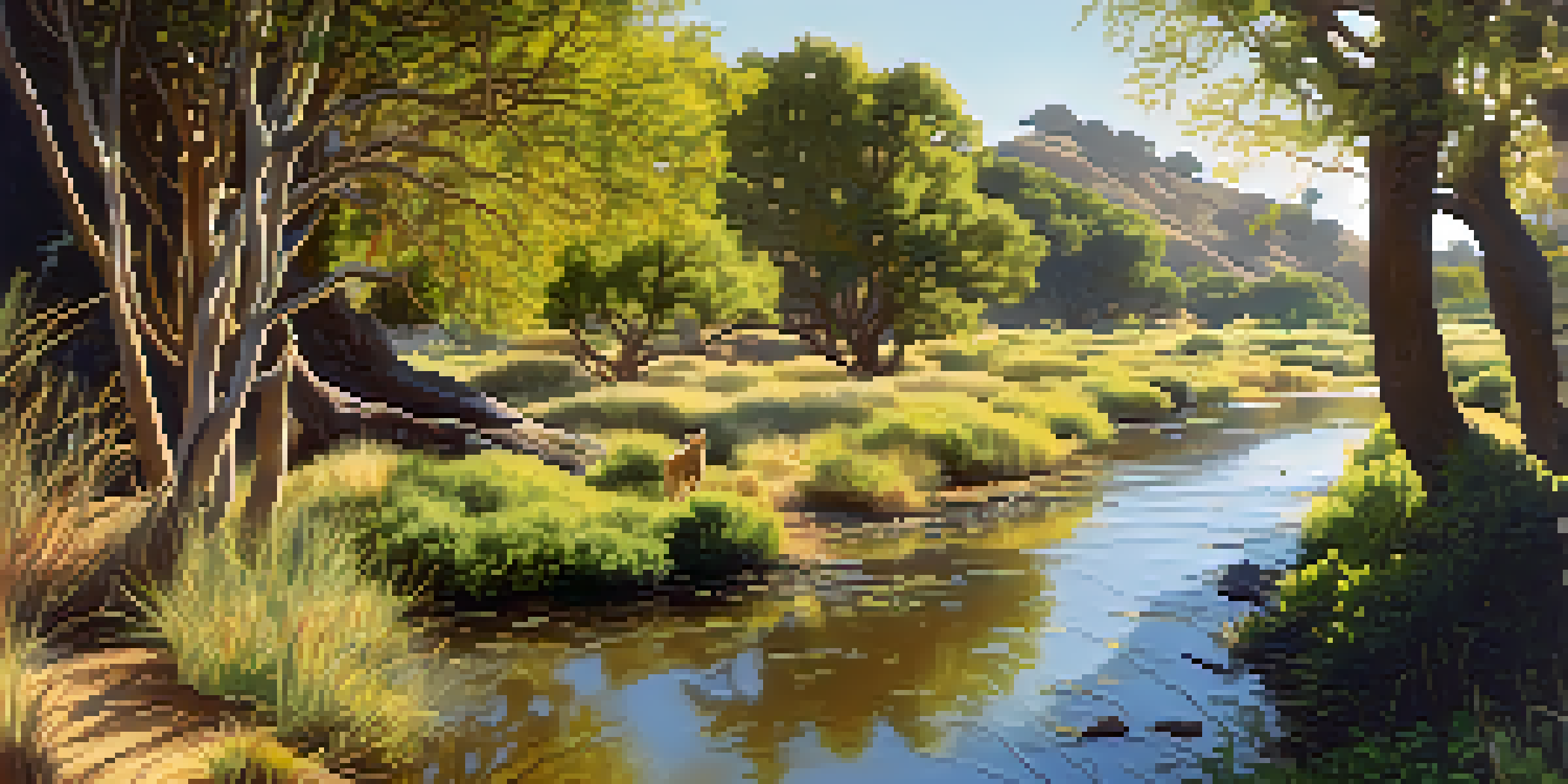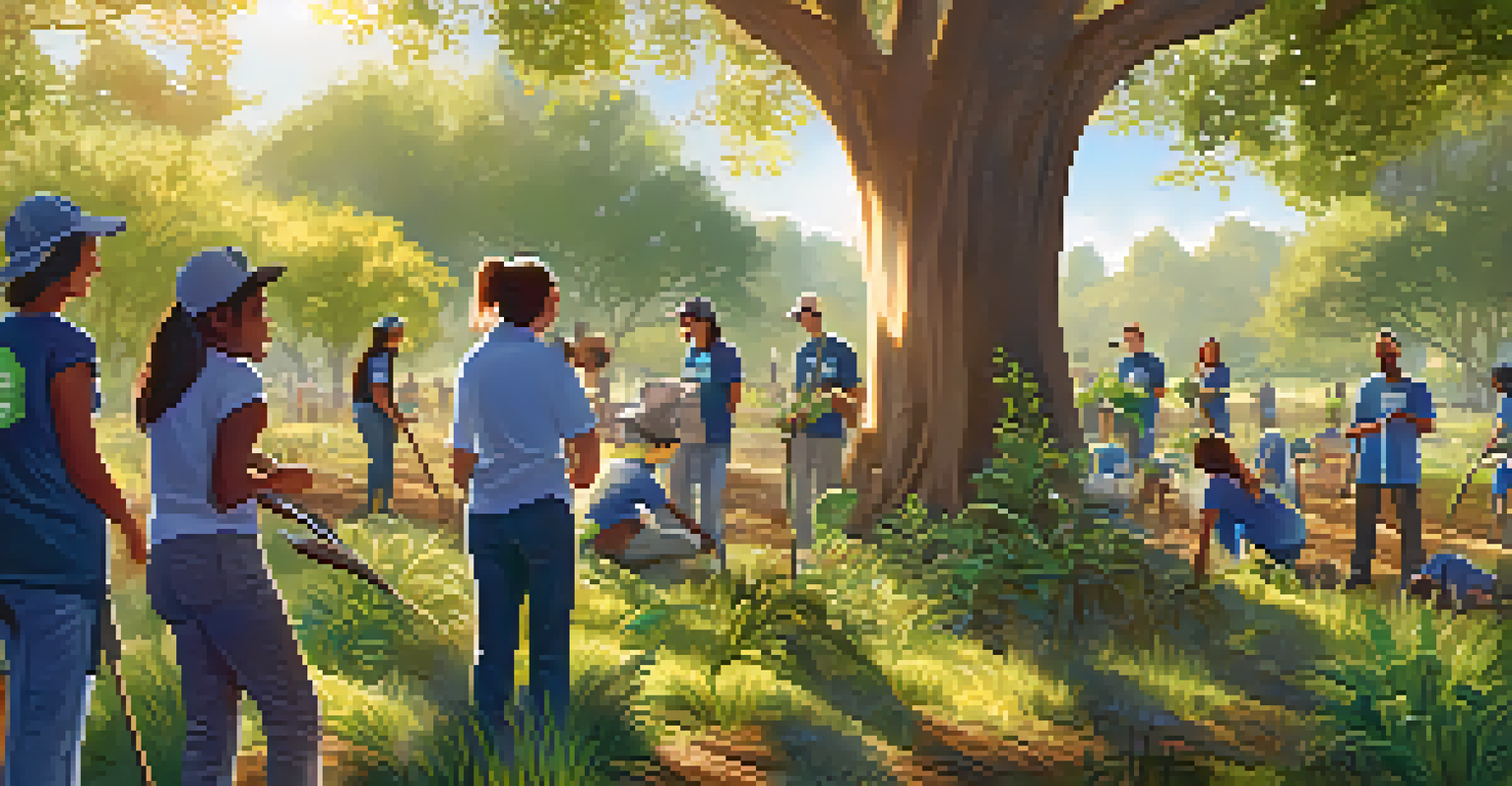The Importance of Biodiversity in San Jose's Ecosystems

What is Biodiversity and Why Does It Matter?
Biodiversity refers to the variety of life forms within a given ecosystem, including plants, animals, fungi, and microorganisms. It plays a crucial role in maintaining ecological balance and supports processes that are essential for life. Understanding biodiversity helps us appreciate the interconnectedness of all living things, which can be likened to a complex web where each strand is vital for the overall strength and health of the structure.
Biodiversity is the foundation for ecosystem services that we rely on for our well-being.
In San Jose, biodiversity is not just a scientific term; it influences our daily lives. The rich variety of species contributes to clean air and water, pollination of crops, and even the beauty of our parks and gardens. When we lose biodiversity, we risk losing these essential services, making it increasingly important to protect and preserve our local ecosystems.
Moreover, biodiversity fosters resilience against environmental changes. A diverse ecosystem is better equipped to handle disturbances such as climate change, invasive species, and pollution. This resilience is similar to a diverse team of individuals working together; the varied skills and perspectives can lead to more effective problem-solving.
San Jose's Unique Ecosystems and Their Biodiversity
San Jose is home to a variety of ecosystems, each with its unique set of species. From the lush riparian habitats along creeks to the arid grasslands and oak woodlands, these ecosystems provide refuge for countless plants and animals. Each habitat plays a specific role in the larger ecological picture, and maintaining their biodiversity is critical for overall environmental health.

For instance, the Coyote Creek corridor serves as a vital habitat for migratory birds and aquatic species. By preserving this area, we not only support wildlife but also enhance recreational opportunities for residents. This connection between nature and community showcases how local ecosystems benefit everyone in San Jose.
Biodiversity's Essential Role
Biodiversity is crucial for ecological balance, providing essential services like clean air and water that benefit all living beings.
Additionally, urbanization poses a significant threat to these ecosystems. As the city grows, habitats can be destroyed or fragmented, leading to a decline in biodiversity. Recognizing and valuing these natural spaces is essential for ensuring their long-term survival and the benefits they provide.
The Role of Native Species in Biodiversity
Native species are organisms that have evolved in a particular region over thousands of years, adapting to local conditions. They play a pivotal role in maintaining the ecological balance within San Jose's ecosystems. For example, native plants provide food and habitat for local wildlife, while also helping to prevent soil erosion and improve water quality.
In nature's economy, the currency is not money, but life.
When non-native species are introduced, they can often outcompete native species for resources, leading to a decline in biodiversity. This phenomenon is similar to a newcomer taking over a well-established group, disrupting the harmony and balance. Protecting native species is crucial for preserving the integrity of our ecosystems.
Community efforts, such as planting native gardens or participating in local conservation programs, can significantly enhance biodiversity. These actions not only support local wildlife but also foster a deeper connection between residents and their natural surroundings.
The Benefits of Biodiversity for Local Communities
Biodiversity offers numerous benefits to local communities, many of which are often overlooked. Healthy ecosystems provide vital services such as clean air, water filtration, and pollination of crops, which directly impact our quality of life. When we support biodiversity, we're essentially investing in our own well-being and that of future generations.
Moreover, diverse ecosystems can enhance recreational opportunities, providing spaces for hiking, birdwatching, and other outdoor activities. These experiences not only improve mental and physical health but also foster a sense of community as people come together to enjoy and protect their natural surroundings. It's a wonderful reminder of how nature can bring us closer.
Threats from Urbanization
Urban growth in San Jose threatens local ecosystems, leading to habitat loss and a decline in species diversity.
Economic benefits also arise from biodiversity. Sustainable practices that protect local species can lead to tourism opportunities and create jobs in conservation and environmental education. This symbiotic relationship between biodiversity and the economy highlights the importance of valuing our natural resources.
Conservation Efforts in San Jose
In San Jose, numerous organizations and community groups are dedicated to conserving biodiversity. From habitat restoration projects to educational initiatives, these efforts aim to raise awareness about the importance of preserving local ecosystems. For example, volunteers often participate in invasive species removal events, which helps to protect the native flora and fauna.
City programs also play a crucial role in conservation. Policies that promote sustainable development and protect green spaces are essential for maintaining biodiversity. By prioritizing these initiatives, San Jose can ensure that its natural heritage is preserved for future generations to enjoy.
Moreover, engaging the community in conservation efforts fosters a sense of stewardship. When residents take part in local projects, they become more connected to their environment and more invested in its protection. This collective action can lead to lasting change and a stronger commitment to preserving biodiversity.
The Impact of Climate Change on Biodiversity
Climate change poses significant challenges to biodiversity worldwide, and San Jose is no exception. Rising temperatures, altered precipitation patterns, and extreme weather events can disrupt ecosystems and threaten the survival of various species. For instance, some plants and animals may struggle to adapt to changing conditions, leading to shifts in population dynamics.
Additionally, local habitats may become fragmented as climate change affects their suitability. This fragmentation can isolate species, making it difficult for them to find mates or access resources. Imagine being a bird that migrates thousands of miles only to find its habitat altered or destroyed; this is the reality many species face today.
Community Action for Conservation
Individuals can support biodiversity through small actions and community involvement, fostering a deeper connection to nature.
Addressing climate change through local initiatives, such as reducing carbon footprints and promoting green infrastructure, is essential for protecting biodiversity. By taking action now, we can mitigate some of the impacts and help ensure a more sustainable future for San Jose’s ecosystems.
How Individuals Can Support Biodiversity
Supporting biodiversity doesn't have to be a daunting task; small actions can make a significant difference. Simple steps, such as planting native plants in your garden or reducing pesticide use, can create a welcoming environment for local wildlife. Every little effort counts, and these actions contribute to healthier ecosystems right in your backyard.
Participating in local conservation events or volunteering with organizations focused on biodiversity can also amplify your impact. These experiences not only educate individuals about the importance of ecosystems but also foster community spirit. Together, you can help protect and restore the natural beauty of San Jose.

Lastly, advocating for policies that prioritize biodiversity at the community level can lead to larger changes. Engaging with local government and supporting sustainable practices can create a ripple effect that benefits the entire region. By becoming an advocate for nature, you help ensure that future generations will enjoy the diverse ecosystems we cherish today.